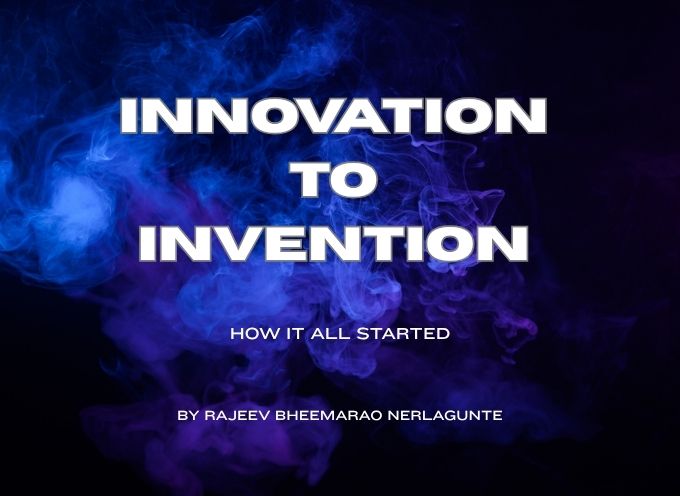


In the Indian subcontinent, Jugaad is the term used for unconventional innovation, born out of scarcity of resources. Scarcity of resources can lead to scarcity of options. This scarcity leads a person to think of a different and unconventional way to solve the problem. In most cases, solutions already exist but are expensive to implement.
I started my career in the late 1990s. Back then, you could hire a person for a low salary, but CNC machines were very expensive. The tools required for CNC machines were sold at exorbitant prices and some tools like U-drills got damaged during operations. My heart ached every time a U-drill got damaged and had to be replaced. To put an end to my misery, I decided to manufacture our own U drill. As my first attempt, I developed a spot face cutter with indexable inserts. The tool worked so well that we sold a few to other workshops. It took us umpteen attempts and almost a year before we could develop a perfect U drill. Our U drills had standard features like through coolant holes and electroless nickel plating. We started using our U drills exclusively in our factory, but we found it very difficult to sell them. All the customers expected free trials and would not give honest feedback. They would complete their urgent work and return the tools, sometimes in damaged condition. However, we continued our tool manufacturing efforts and developed chamfering tools, back chamfering tools, end radius tool holder, side and face cutters, combination cutters and face mill cutters.
Another area which attracted my attention, during my early days, was fixture making. This activity requires theoretical knowledge of fixture design and practical knowledge of the machining process. Placing orders for fixtures on external suppliers, most often, resulted in delays and failures. Ultimately, I decided to take matters into my own hands and designed our first ball turning fixture. This ball turning fixture made our ball valve balls extremely accurate and increased our productivity. Increased tool life was a bonus. The concept was replicated to manufacture balls of other sizes. Some other fixtures that we developed subsequently were two jaw hydraulic chuck, milling fixture for use on CNC turning lathe, hydraulic multiple ball milling fixture, hydraulic valve test rigs, pallet type fixture for drilling on lathe, fixture for drilling of 3 Way L port ball on CNC turning centers, turret disc and collet chuck development. About two decades back, I developed a special kind of collet which withstood a lot of workshop abuse without getting damaged. I was pleasantly surprised to see a company displaying such a collet, as a novel product, in a machine tools exhibition, recently.
Innovation happens when all the easy exits are closed. Service technicians did not visit our factory due to its remote location, in the early days. As a result, we learnt to repair our CNC machines and servo stabilizers. We developed an instinct to fix our own breakdowns as external help did not exist. Moreover, due to very few service providers, the cost of repairs was prohibitive. We saved money and time by not relying on outside help. Every entrepreneur has similar experiences when he or she starts a new facility. Over time, as the business develops and produces more value-added products with managers becoming responsible for production, a cost over benefit analysis, tilts the balance in favor of service technicians.
There is a very fine difference between Innovation and Invention. In our quest for an innovative solution, when we stumble upon an original idea, an invention occurs. Most often, these ideas originate when you are clueless about the next step to take. I have never shied away from developing challenging products for customers throughout my career. However, one of our customers demanded a 3-way valve for an application where our standard product failed. During testing, the ball would move away from the seat under pressure and create a leakage path. All our efforts to check the leakage ended up tightening the seats, to an extent where the ball would not rotate. The leakage was arrested but so was the ball movement. This was not a feasible solution. An innovation was made overnight where a special seat design was developed, that moved the seat with the fluid pressure along with the ball. We called it the “follow me seat” design. Here, the ball movement was very easy on the hand and the longer seat life was easy on the hand and the longer seat life was easy on the pocket. This made our product a roaring success.
My research work on 3-way ball valves did not stop with the above innovation. Customers are always pushing us to make better products. Even though we developed unique products with low operating torques, bigger size valves still required gear actuators to operate. Our quest for lower operating torque for larger sized 3-way ball valves led us to invent a special stem arrangement to allow the ball to float in both directions. We were awarded a patent by Indian Patents Office for this invention.
A problem faced by one of our esteemed customers led us to invent one more product. This product is called a “Hydraulic Rotary Actuator”. This is a very compact actuator that can be used to operate a quarter turn ball valve using hydraulic pressure. We have applied for an Indian Patent and are awaiting the patent examination. We are constantly working on innovations. I believe that always innovating is a mindset. When all the easily available, expensive options are not allowed to erode your resources, innovation remains the only option. The joy that my team and I experience when an abstract idea turns into reality, is indescribable. My search for my next invention continues…
(In English, "jugaad" is often translated as a flexible approach to problem-solving that uses limited resources in an innovative way)
Comments